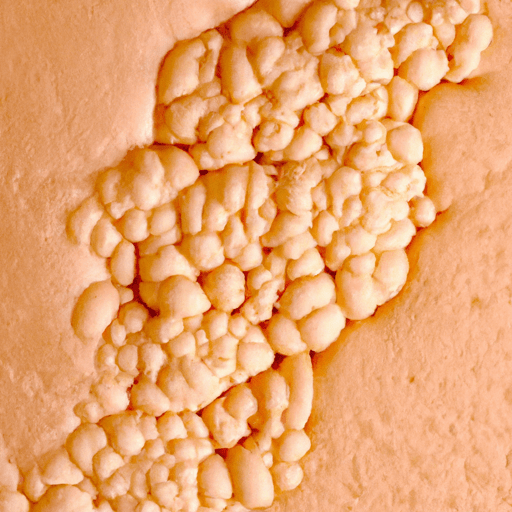The Magic of Brewer’s Yeast: A Culinary Powerhouse
If you are a food enthusiast, you may have come across the term “brewer’s yeast” in various recipes or health food stores. But what exactly is this mysterious ingredient? Brewer’s yeast, derived from the single-celled fungus Saccharomyces cerevisiae, is not just any ordinary yeast. It is a culinary powerhouse that offers a unique flavor and a plethora of nutritional benefits. Join me as we explore the enchanting world of brewer’s yeast!
A Taste Sensation
Brewer’s yeast has a distinctive taste that can be described as nutty, slightly bitter, and reminiscent of toasted bread. This complex flavor profile adds depth to a wide range of dishes, making it a sought-after ingredient among culinary enthusiasts. The natural umami notes present in brewer’s yeast lend a savory touch to recipes, making it a secret weapon for enhancing the taste of savory dishes.
A Versatile Kitchen Companion
Brewer’s yeast is incredibly versatile, finding its way into an array of recipes from savory to sweet. Its popularity in vegetarian and vegan circles stems from its ability to offer a savory, umami flavor that can closely mimic the taste of meat. It makes a fantastic addition to plant-based burgers, stews, and gravies, imparting a hearty richness that elevates these dishes to new heights.
For those with a sweet tooth, brewer’s yeast can also be used as an alternative to conventional baking yeast. It adds a subtle depth of flavor to bread, rolls, and pastries, creating a unique twist that will surprise and delight your taste buds.
The Nutritional Powerhouse
Beyond its delectable taste, brewer’s yeast is packed with essential nutrients, making it a valuable addition to any diet. It is a rich source of B-complex vitamins, including thiamine, riboflavin, niacin, and folate. These vitamins are vital for energy production, brain function, and maintaining a healthy nervous system. Brewer’s yeast is also packed with protein, fiber, and various minerals such as iron, selenium, and zinc.
This nutritional profile makes brewer’s yeast an excellent choice for those looking to boost their dietary intake of vitamins and minerals naturally. It can be a great addition to smoothies, sprinkle it over salads, or incorporate it into homemade granola bars for a nutritious and flavorful twist.
A Historical Journey
Brewer’s yeast has been a part of human civilization for centuries. It originally gained prominence in ancient Egypt, where it was used in the production of beer, their beloved national beverage. The brewing process created an excess of yeast, which was then repurposed for various culinary applications. Over the years, brewer’s yeast has transcended cultural boundaries and found its place in kitchens around the world.
Fun Facts About Brewer’s Yeast
- Brewer’s yeast was traditionally referred to as “yeast foam” or “froth of beer” due to its origin in the brewing process.
- It gained popularity as a nutritional supplement during the 19th century when German scientist Justus von Liebig discovered its high protein content.
- Due to its abundance of B-vitamins, brewer’s yeast was widely used as a treatment for various ailments, including vitamin deficiencies.
Brewer’s yeast is an indispensable ingredient for any adventurous cook. Its unique taste, versatility, and remarkable nutritional benefits make it a true treasure in the culinary world. Whether you are looking to enhance the flavors of your savory dishes or add a nutritional boost to your baked goods, brewer’s yeast is a fantastic choice that will bring depth and richness to your creations. Embrace the magic of brewer’s yeast and elevate your culinary repertoire to new heights!
Brewer’s Yeast
Origin: Brewer’s yeast, also known as Saccharomyces cerevisiae, is a type of fungus that is commonly used in brewing beer. It is a single-celled organism that reproduces asexually by budding. This yeast is cultivated from the wild yeast strains that were historically used in brewing.
Common Uses: Brewer’s yeast is known for its use in brewing beer, where it plays a crucial role in fermentation by converting sugars into alcohol and carbon dioxide. However, it is also used for various other purposes. It is a popular supplement in the form of powder or tablets and is often used to enhance the nutritional content of foods, as well as in baking and cooking to add flavor and nutritional benefits.
Nutritional Benefits: Brewer’s yeast is considered a nutritional powerhouse due to its rich content of various vitamins, minerals, and proteins. It is an excellent source of B-complex vitamins, including thiamine (B1), riboflavin (B2), niacin (B3), pyridoxine (B6), and folate (B9). It also contains essential amino acids, minerals like chromium, selenium, and potassium, and is a source of dietary fiber. Brewer’s yeast is often used as a dietary supplement to boost energy, support digestion, promote skin health, and maintain a healthy immune system.
Unique Properties: One unique property of brewer’s yeast is its ability to convert sugar into alcohol and carbon dioxide during fermentation. This process is crucial in brewing beer and other alcoholic beverages. Brewer’s yeast also contains a compound called beta-glucan, which is a type of soluble fiber known for its potential health benefits, such as supporting heart health and maintaining healthy cholesterol levels.
Historical Significance: Brewer’s yeast has a long history of use in brewing beer, dating back thousands of years. The ancient Egyptians and Babylonians were known to use yeast in brewing, and it is believed that brewer’s yeast was one of the earliest domesticated organisms. Over time, brewing techniques have evolved, but the use of yeast has remained a fundamental part of the brewing process. Nowadays, brewer’s yeast is not only valued for its role in brewing but also for its nutritional properties and culinary applications.




Use the share button below if you liked it.
It makes me smile, when I see it.